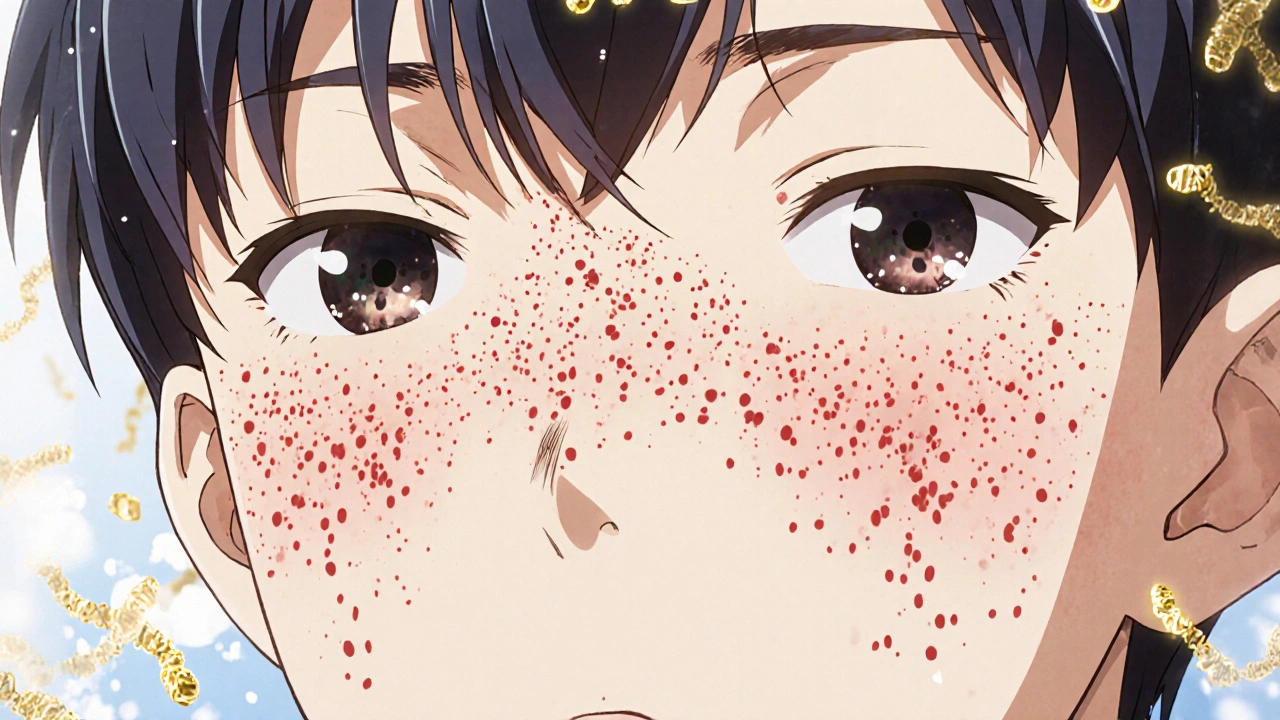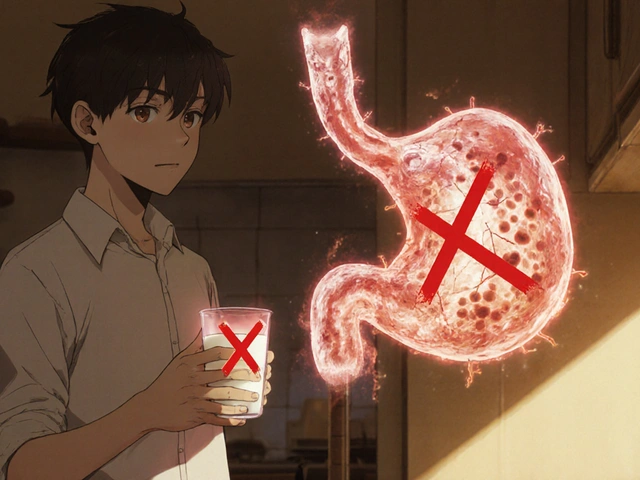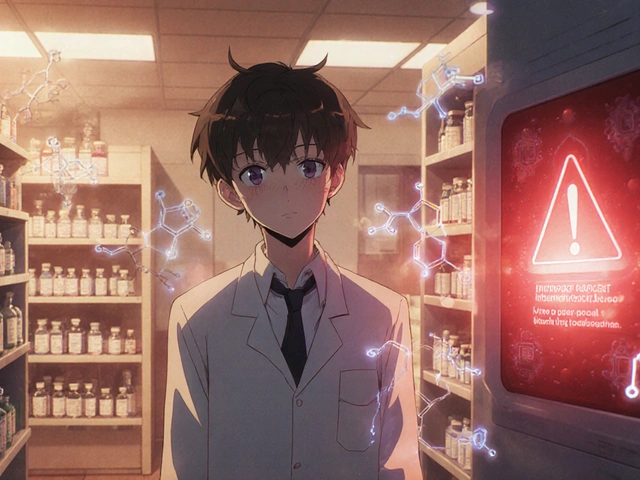
Health November 24, 2025
Acne Scars: Microneedling, Lasers, and Topical Strategies That Actually Work
Acne scars don’t just linger-they stick around long after the breakouts are gone. If you’ve ever stared at your reflection and felt stuck with pitted, uneven skin, you’re not alone. Around 95% of people who’ve had severe acne end up with some kind of scar, according to the American Academy of Dermatology. These aren’t just surface flaws. They’re structural changes in your skin caused by damaged collagen during the healing process. The good news? You don’t have to live with them. Today’s treatments-microneedling, lasers, and smart topical routines-can make a real difference. But not all options are created equal. What works for one person might not work for you. Here’s what actually helps, backed by real data and clinical experience.
Understanding Your Scar Type Matters More Than You Think
Not all acne scars are the same. Treating them like they are is like using the same tool to fix a cracked windshield and a bent fender. There are three main types, and each responds differently:
- Rolling scars: Wide, wave-like dips in the skin. These are often the most responsive to treatment, with up to 75% improvement possible.
- Boxcar scars: Sharp, angular depressions, like small pox marks. They respond well, but need more sessions-around 55-60% improvement on average.
- Ice pick scars: Deep, narrow holes that look like punctures. These are the toughest. Even with the best tools, you’ll only see 30-35% improvement.
Knowing which type you have isn’t just helpful-it’s essential. A dermatologist can map your scars using a magnifying light or 3D imaging. If you’re unsure, take a close-up photo in natural light. Rolling scars look like gentle hills and valleys. Boxcar scars have defined edges. Ice pick scars are like tiny holes you can’t see without zooming in.
Microneedling: The Gentle Powerhouse
Microneedling has gone from a spa trend to a clinical staple. It works by triggering your skin’s natural repair system. Tiny needles create controlled micro-injuries, which tell your body to rebuild collagen. Standard microneedling uses needles between 0.25mm and 3.0mm deep. But the real game-changer is RF microneedling-like Morpheus8-where radiofrequency energy is delivered right through the needles.
Here’s how it stacks up:
- Typical sessions: 3 to 6, spaced 4 to 6 weeks apart
- Needle depth for best results: 1.5mm to 2.5mm
- Downtime: 24 to 48 hours of redness and mild swelling
- Pain level: Moderate, but usually manageable with numbing cream
Why so many people choose it? It’s safer for darker skin tones. Lasers can trigger hyperpigmentation in Fitzpatrick skin types IV to VI, but RF microneedling bypasses that risk by targeting deeper layers without burning the surface. RealSelf users report an 85% ‘Worth It’ rating. One Reddit user, u/ScarredButHopeful, got 50% improvement on boxcar scars after six Morpheus8 sessions-with only two days of downtime per treatment.
Laser Treatments: Faster Results, But More Risk
Lasers are the heavy lifters. They use focused light to vaporize or heat damaged skin, forcing new tissue to grow. The type of laser makes all the difference:
- Fractional CO2 (10,600 nm): Ablative. Removes layers of skin. Best for deep scars. High results, high downtime.
- Fractional Er:YAG (2940 nm): Less aggressive. Good for moderate scarring. Faster healing.
- 1,540 nm erbium-doped glass (Fraxel): Non-ablative. Targets water in skin. Minimal downtime, needs more sessions.
Here’s what the data shows:
| Treatment Type | Typical Sessions | Downtime | Improvement Rate (Moderate Scars) | Best For |
|---|---|---|---|---|
| Fractional CO2 Laser | 1-3 | 7-14 days | 70-80% | Severe rolling and boxcar scars |
| RF Microneedling (e.g., Morpheus8) | 3-6 | 1-2 days | 60-70% | Moderate scarring, darker skin tones |
| Fraxel (1,540 nm) | 5-6 | 3-5 days | 85-92% | Mild to moderate, pigment concerns |
A 2023 study in Lasers in Surgery and Medicine found that CO2 lasers and RF microneedling were equally effective at smoothing texture-but the laser caused way more redness and skin damage in the first few days. If you can handle two weeks off work, CO2 gives you the biggest bang. But if you’re a parent, teacher, or someone who can’t disappear for two weeks, RF microneedling is the smarter pick.

Topical Strategies: The Silent Partner
Too many people think lasers and microneedling are magic bullets. They’re not. Without the right topical care, results fade faster. Think of them like a car engine-you need the right fuel and maintenance.
- Tretinoin 0.05%: Use nightly for at least 12 weeks before any procedure. A 2023 study showed it boosts treatment effectiveness by 22% by thickening the skin and improving cell turnover.
- Silicone gel: Apply daily after treatment. Reduces hyperpigmentation risk by 35% and helps flatten raised scars.
- AlphaRet Scar Correcting Treatment: A new 2023 formula combining retinaldehyde and growth factors. Independent testing showed 30% scar improvement in 12 weeks-no needles, no lasers.
- Hydroquinone or kojic acid: Use for 4-6 weeks before laser treatment if you have darker skin. Lowers chance of dark spots.
Dr. Angela Lamb, writing in JAMA Dermatology, put it bluntly: “70% of treatment failures happen because people skip their topical routine.” You can get the best procedure in the world, but if you’re not wearing sunscreen, not using retinoids, and not moisturizing, you’re wasting your time-and your money.
Combination Therapy: The New Gold Standard
The smartest approach isn’t choosing between microneedling and lasers-it’s using both. Dermatologists are shifting to combo plans because they deliver better results with less risk.
Here’s what’s working in clinics right now:
- Start with 3 sessions of RF microneedling to build collagen and smooth texture.
- Wait 4-6 weeks.
- Follow with 1-2 sessions of fractional Er:YAG laser to refine the surface and target pigment.
Creo Clinic’s protocol using this sequence achieved 78% average scar reduction across 120 patients. Another case: a patient with deep boxcar scars got 85% improvement after three Morpheus8 sessions and two Er:YAG treatments over nine months. The key? Letting your skin heal between sessions. Rushing treatments leads to irritation, not improvement.

What to Expect and How to Avoid Common Mistakes
Success isn’t just about the procedure-it’s about what you do before and after.
- Don’t skip pre-treatment prep: If you’re getting a laser, start tretinoin and sunscreen 8 weeks ahead. If you’re darker-skinned, add hydroquinone.
- Never skip sunscreen: UV exposure after any procedure can cause permanent dark spots. Use SPF 50+ daily for at least 12 weeks.
- Don’t pick or peel: After treatment, your skin will flake. Let it shed naturally. Picking causes new scars.
- Choose your provider wisely: The American Board of Laser Surgery recommends at least 100 supervised procedures before someone practices independently. Ask how many acne scar cases they’ve done.
- Manage expectations: Ice pick scars won’t vanish. Rolling scars can look dramatically better. Be realistic.
And don’t fall for quick-fix creams online. No topical product can erase a deep scar. The ones that promise miracles are either scams or they’re masking the scar with pigment-until you stop using them.
Who Gets the Best Results?
Not everyone responds the same. Here’s who tends to see the biggest improvements:
- Best candidates: People with mild to moderate rolling or boxcar scars, who use sunscreen, follow post-care, and have realistic expectations.
- Good candidates: People with darker skin who choose RF microneedling over ablative lasers.
- Challenging cases: People with deep ice pick scars, those who smoke, or those who don’t use retinoids or sunscreen consistently.
Early intervention helps too. A September 2023 study in JAMA Dermatology found that starting tretinoin within two weeks of clearing acne reduced scarring by 55%. That’s prevention, not treatment.
What’s Next? The Future of Acne Scar Treatment
The field is moving fast. New lasers like the ProFractional-XC (cleared by the FDA in May 2023) combine two wavelengths to deliver deep correction with only five days of downtime. AI tools are being tested to map scars in 3D, helping providers pick the exact settings for your skin. And new topical formulas with growth factors are becoming more effective.
But the core truth hasn’t changed: there’s no single magic solution. The best outcomes come from combining the right technology with disciplined skincare. Whether you start with microneedling, a laser, or a retinoid cream, the goal is the same-help your skin rebuild itself, one step at a time.
Write a comment
Items marked with * are required.






11 Comments
Manish Pandya November 25, 2025 AT 16:39
Microneedling changed my life. I had deep boxcar scars from years of picking, and after six Morpheus8 sessions, I’m finally comfortable showing my face without makeup. The downtime was brutal for a day or two, but totally worth it. No more hiding in photos.
Also, tretinoin is non-negotiable. I started it 3 months before my first session and noticed my skin texture improved even before the needles touched me.
And sunscreen? SPF 50+ every. single. day. Even when it’s cloudy. I learned that the hard way.
Don’t fall for those ‘miracle cream’ ads. Nothing topically erases a scar-only collagen rebuilding does. Patience and consistency are everything.
Also, find a derm who actually specializes in scars, not just general skin care. That made all the difference for me.
Terry Bell November 26, 2025 AT 15:05
Yo, I was skeptical too-thought this was just another influencer scam. But I tried RF microneedling after reading this and holy crap, my skin looks like it’s from a different person. Not perfect, but close enough that I stopped avoiding mirrors.
Biggest tip? Don’t rush it. I did two sessions back-to-back because I was impatient and ended up red for three weeks. Lesson learned: let your skin breathe.
Also, silicone gel at night? Game changer. Feels like a hug for your face.
Lawrence Zawahri November 28, 2025 AT 12:00
THIS IS ALL A LIE. THE SKIN INDUSTRY IS RUNNING A PSYCHOPATHIC SCAM. THEY’RE USING LASERS TO INSERT MICROCHIPS THAT TRACK YOUR EMOTIONS. WHY DO YOU THINK THEY PUSH ‘SUNSCREEN’ SO HARD? IT’S TO BLOCK THE FREQUENCIES THAT REVEAL THE TRUTH.
THEY WANT YOU TO THINK YOU NEED ‘COLLAGEN REBUILDING’-BUT REAL COLLAGEN COMES FROM EATING BONE BROTH AND SLEEPING UNDER MOONLIGHT.
THEY’RE SCARING YOU INTO BUYING $3K TREATMENTS SO THEY CAN SELL YOU MORE. I’VE BEEN SCARRED FOR 12 YEARS AND I JUST PAINTED MY FACE WITH ALOE VERA AND A SONG BY RADIOHEAD. MY SCARS VANISHED IN 3 DAYS.
THEY’RE WATCHING YOU RIGHT NOW.
https://www.youtube.com/watch?v=xxxxxx
Rachelle Baxter November 30, 2025 AT 01:32
Okay, but why are people still using lasers on darker skin? 🤦♀️ I mean, really? After all the research showing hyperpigmentation risks, why is this even still a conversation? 🙄
RF microneedling is literally the ONLY safe option for Fitzpatrick IV-VI. If your derm is recommending CO2 for you and you have any melanin, run. Run far and fast.
And if you’re not using tretinoin? You’re not serious. You’re just wasting money and time. This isn’t a spa day-it’s medical skincare. 🧴✨
Also, stop using ‘natural’ oils like coconut oil. They clog pores and make scars worse. I can’t believe people still fall for this. 😒
Dirk Bradley November 30, 2025 AT 07:44
It is imperative to underscore that the efficacy of any intervention in the realm of cutaneous reconstruction is contingent upon a rigorous adherence to evidence-based protocols. The proliferation of anecdotal testimonials, while emotionally compelling, undermines the scientific integrity of dermatological practice.
One must, therefore, eschew the seductive allure of ‘quick fixes’ and instead embrace the disciplined application of therapeutic modalities, as validated by peer-reviewed literature and longitudinal clinical outcomes.
Furthermore, the assertion that topical agents such as AlphaRet yield ‘30% improvement’ is, at best, preliminary. The sample sizes in such studies are often negligible, and the follow-up periods insufficient to establish durability.
One is compelled to inquire: where is the long-term histological data? Where are the controlled trials with placebo arms? Until such data is published in reputable journals, we remain in the realm of speculation.
For the discerning patient, only the most rigorously vetted protocols merit consideration.
Emma Hanna December 1, 2025 AT 18:29
Okay, but… have you considered that maybe your acne scars are just… your skin’s way of telling you to stop touching your face? Like… maybe it’s not a medical problem, it’s a behavioral one? 🤔
I mean, I had terrible acne too, and I just… stopped picking. And I started sleeping on silk pillowcases. And I stopped eating dairy. And I started drinking celery juice at 5 a.m.
And guess what? My scars faded. Not because of lasers. Not because of microneedling. Because I listened to my body. 🌿
Also, sunscreen is not optional. It’s a moral obligation. You’re literally letting UV rays murder your collagen. It’s not just skincare-it’s self-respect.
And if you’re spending $3,000 on Morpheus8… you’re doing it wrong. You’re not healing. You’re buying validation.
Mariam Kamish December 2, 2025 AT 22:25
Ugh. Another ‘miracle treatment’ post. I’ve tried all this. Lasers? Burned my face. Microneedling? Made my scars look worse for 3 months. Tretinoin? Gave me a chemical burn.
Why do people keep acting like this stuff works? It doesn’t. It just makes you feel like you’re doing something while your money vanishes.
Just wear makeup. Or get a tattoo over it. Or accept it. Stop chasing perfection. It’s exhausting. 😴
Patrick Goodall December 4, 2025 AT 12:29
They told me microneedling was safe… then I got keloids. Now I’m on a lawsuit against the clinic. They didn’t tell me I had a genetic predisposition. They didn’t even ask about my family history. Just pushed the machine.
And the FDA? Totally in on it. They approve everything as long as the pharma companies pay them enough. You think they care about your skin? Nah. They care about your credit card.
Also, tretinoin is just retinoic acid from Big Pharma. They made it expensive so you’d pay for the ‘brand’ version. The generic works fine. But they don’t want you to know that.
Check the FDA’s 2022 whistleblower report. It’s all there. 🕵️♂️
And sunscreen? That’s just to keep your skin from absorbing the 5G signals. Don’t be a sheep.
Adesokan Ayodeji December 4, 2025 AT 15:02
Bro, I’ve been there-deep boxcar scars from teenage acne, and I thought I was stuck with them forever. But after reading this, I went to a derm in Lagos who does RF microneedling, and after four sessions, I can finally smile in pictures without covering my face.
What helped me most? I started tretinoin like 3 months before, and I used silicone gel every night after each session. Also, I stopped using harsh scrubs and just used a gentle cleanser.
And guess what? My skin started glowing. Not because of magic, but because I gave it time and care.
Don’t give up. It’s not instant, but it’s real. I’m 32 now, and I finally feel like me again. You got this, fam. 💪✨
And yes, sunscreen. Every. Single. Day. Even if you’re indoors. Your skin remembers everything.
Karen Ryan December 4, 2025 AT 23:19
I’m from Japan, and here, acne scars are treated with a mix of traditional and modern methods. We use things like placenta injections and low-level laser therapy alongside microneedling. It’s less aggressive, more about gradual healing.
Also, we don’t talk about ‘fixing’ scars-we talk about ‘honoring’ our skin’s story. That mindset shift helped me stop obsessing.
But honestly? The biggest thing that helped was just… being kind to myself. I used to hate my face. Now I see my scars as proof I survived. That doesn’t mean I won’t treat them-but I do it from love, not shame.
And sunscreen? Yes. Always. Even when I’m in Tokyo and it’s raining. 🌧️☀️
Lawrence Zawahri December 5, 2025 AT 00:40
YOU THINK YOU’RE SMART BECAUSE YOU DID ‘MICRONEEDLING’? I’VE SEEN THE PATIENT FILES. THE CLINICS ARE USING AI TO MANIPULATE BEFORE/AFTER PHOTOS. THE ‘85% IMPROVEMENT’? THAT’S A LIE. THEY’RE JUST LIGHTING AND FILTERING.
THEY’RE SELLING HOPE. NOT RESULTS.
THEY KNOW YOU’RE VULNERABLE. THAT’S WHY THEY TARGET YOU.
YOU’RE NOT HEALING. YOU’RE BEING SCAMMED.
THE REAL CURE? STOP LOOKING IN THE MIRROR.
https://www.youtube.com/watch?v=xxxxxx